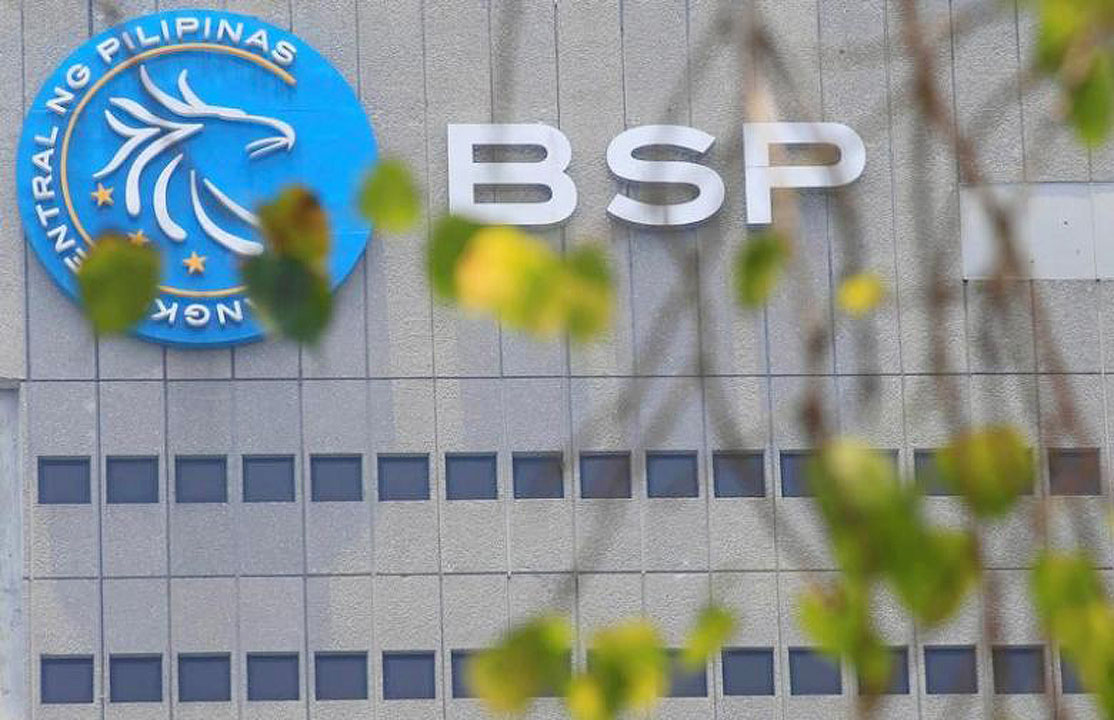Bankers see BSP delaying RRR cut

THE BANGKO SENTRAL ng Pilipinas (BSP) might postpone the reduction in big banks’ reserve requirement ratio (RRR) this year as interest rates rise to contain inflation, officials from banks said.
“If this trend continues, I will understand if the central bank postpones (the RRR cut) at the more appropriate time,” EastWest Banking Corp. President and Chief Executive Officer Antonio C. Moncupa, Jr. said in an interview with BusinessWorld during a conference hosted by The Asian Banker last week.
The BSP last week raised its benchmark policy rate by 50 basis points (bps) to 4.25%. Rates on the overnight deposit and lending facilities also rose by 50 bps to 3.75% and 4.75%. The Monetary Board has raised 225 bps so far since May to curb inflation.
Inflation quickened to 6.3% in August from a year earlier, exceeding the central bank’s 2-4% target for a fifth straight month. It averaged 4.9% in the first eight months.
“Because it’s counter-cyclical to tighten monetary condition and arrest inflation,” Mr. Moncupa, who also heads the Bankers Association of the Philippines (BAP), said.
“It will send mixed signals. They’re hiking rates and then tapping reserves. So, there’s a big possibility that the reserve cuts will be delayed,” Metrobank Financial Markets Sector Head Fernando Antonio A. Tansingco said in a mix of English and Tagalog.
“Even if they have to delay the cut in reserves, I think it’s the right thing to not cut reserves until you can contain inflation,” Mr. Tansingco added.
The BSP earlier committed to bringing down the RRR of big banks to single digits by 2023.
During the central bank’s monetary policy press briefing last week, BSP Deputy Governor Francisco G. Dakila, Jr. said the monetary board has yet to decide whether a cut in RRR is still possible within the year.
“As we’ve reiterated, the goal is to move towards a single digit for reserve requirements by the end of the term of the governor,” Mr. Dakila said.
The central bank reduced the RRR, or the percentage of deposits and deposit substitutes banks must keep with the BSP, in March 2020 to cushion the impact of the pandemic on the economy.
The BSP earlier set digital banks’ reserve ratio at 8%. The RRR for big banks is currently at 12%, one of the highest in the region. Reserve requirements for thrift and rural lenders are at 3% and 2%, respectively.
A cut in RRR is a move intended to be an operational adjustment to facilitate the BSP’s shift to market-based instruments for managing liquidity in the financial system, particularly the term deposit facility and the BSP securities.
Mr. Moncupa said he does not think the RRR will be cut, “not at this time.”
“But what will happen in the future if they cut? It would lead to a more efficient and better financial intermediation because intermediation costs will be lower,”
When asked what could be a good percentage for big banks’ RRR, Mr. Tansingco said 9% could be a good number.
“It will bring down the cost of intermediation for the banks. Right now, it’s very expensive to operate a bank in the Philippines. I think we have one of the highest reserve requirements in the world,” Mr. Tansingco said.
He said banks have to comply with high reserve requirements, with the minimum required lending for the agriculture and agrarian reform (agri-agra) sectors and taxes such as the gross receipts tax (GRT).
“But the thing about it is, the central bank is now looking at measures to lower the costs, like the review in agri-agra. I think they’re also reviewing the taxation, so we’ll see how it goes,” Mr. Tansingco said.
Republic Act No. 10000 or the Agri-Agra Reform Credit Act of 2009 requires banks to lend 15% of their loan book to the agriculture sector, with a 10% quota set for agrarian reform beneficiaries. — Keisha B. Ta-asan



